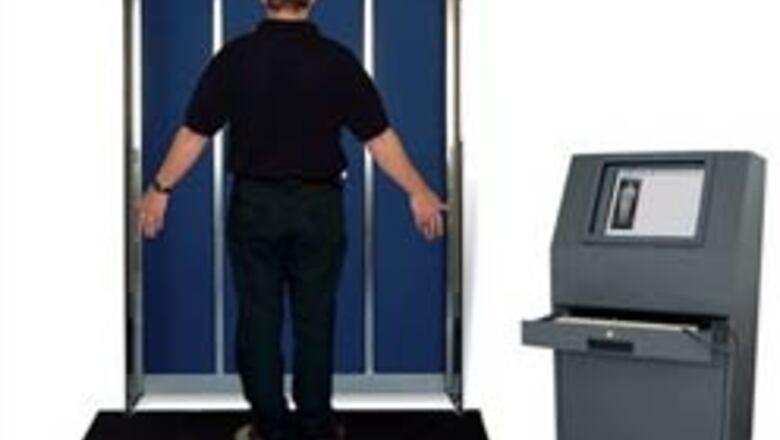
views
Boston: While the process isn't perfect, scanning machines do exist to detect liquid explosives like the ones purportedly at the heart of the terrorist plot broken up this week.
But don't expect the machines to be rushed into airports soon. Cost and logistical issues present challenges for these devices.
Rapiscan Systems, part of OSI Systems Inc is developing four kinds of devices, some based on technologies more than 10 years old, that can detect liquid or gel-based explosives.
Two that would work on carry-on bags already have been tested by the Transportation Security Administration (TSA) and "could be deployed this afternoon," said the company's vice president for government affairs, Peter Kant.
But none are being used in the US. Some are in place overseas, though Kant said those aren't in airports.
One big reason is that it is not easy to integrate the explosive-detecting machines, some of which can cost $ 2,50,000, into existing security checkpoints.
Due to the fact that each briefcase, purse or other carry-on bag has to be put in a special drawer for analysis, using the detectors could significantly bog down passenger screening.
Homeland security analyst Brian Ruttenbur of Morgan Keegan Co also points out that the technology still produces a relatively high number of false alarms.
For those reasons — and because there still has not been a successful attack using liquid explosives — Ruttenbur believes the TSA won't be pressed to overhaul the current screening regimen.
That would mean a continued reliance on systems not designed to stop liquid explosives.
Metal detectors figure to remain the primary method, with the main secondary screening coming from "puffer" technology that blows air on people and sniffs the particles that emerge for suspicious materials.
For a machine to detect explosives in liquid or solid form, it bombards an object with energy — such as radio waves or neutrons — and in seconds measures the reaction, a response that differs depending on the material's chemical properties.
Software in the machine is programmed to alert screeners if it detects chemical signatures known to match those of dangerous materials.
A key question, though, is whether this kind of detection system can realistically block terrorists from bringing seemingly innocuous liquids past security and combining them later to deadly effect.
Certainly, some common ingredients in liquid explosives can be programmed into the detector.
PAGE_BREAK
But Kant, at Rapiscan, said he would not discuss the vulnerabilities of that approach. "Whether it detects the components of explosives and which ones, there's no way I'm putting that in print," he said.
Vice president of sales at a rival maker of explosive-detection systems, HiEnergy Technologies Inc, Sean Moore, said future screening machines could be linked so that they might let a person through with one kind of liquid — but stop another traveler carrying another type of liquid that reacts explosively with what the previous person was carrying.
This list of liquids to watch for, he acknowledged, would have to be constantly updated as "terrorists become more ingenious."
That scenario, however, is not encouraging. Not only are security checkpoints not networked, but HiEnergy has not sold a single device for US airports.
Its main project so far involves field tests on unattended packages in Philadelphia with the Southeastern Pennsylvania Transportation Authority.
A totally different kind of scanning technology that already has begun to emerge, backscatter screening, has no automated ability to detect explosives. But its backers say it nonetheless could go a long way to halting plots like the one apparently thwarted this week.
Backscatter screening is much like traditional X-rays, except that the system sends more, but weaker, X-rays at an object. It can't penetrate skin, but it can reveal items under someone's clothes — such as a hidden bottle of liquid.
A major problem is that the view is so powerful that an individual's private parts can be seen, which forced the TSA to delay tests while vendors tweaked the machines' programming to distort or mask bodily images. And backscatter systems still leave it up to a human screener to recognize a suspicious item.
But vice president of marketing for backscatter vendor American Science and Engineering Inc, Joe Reiss, says it makes more sense to invest in $ 50,000 systems like his — which might help catch a wide variety of suspicious behavior — than to zero in on liquid explosives, the technique of the moment.
"The name of the game is to provide enhanced methods of detecting what people want to conceal. If you get too focused on a perfect solution for yesterday's problem, you might be missing the bigger picture," he said.

















Comments
0 comment